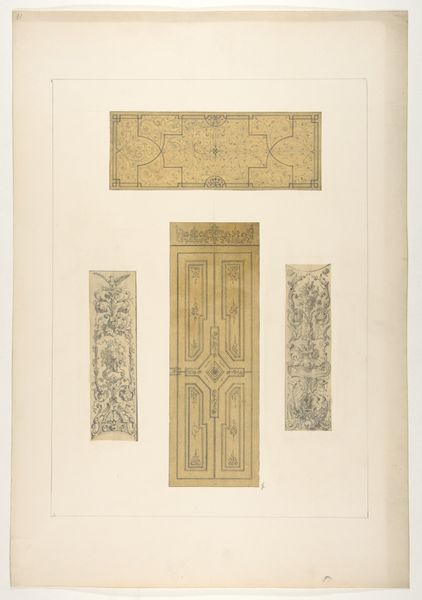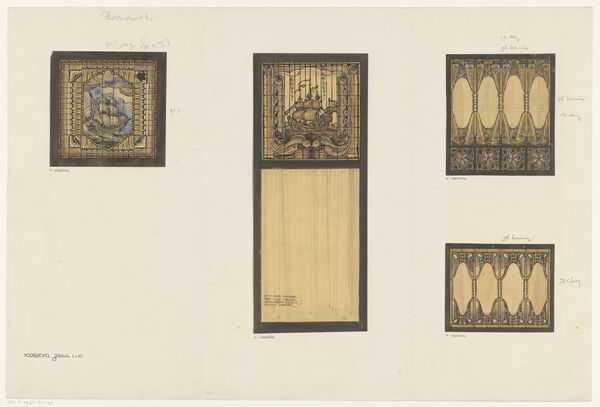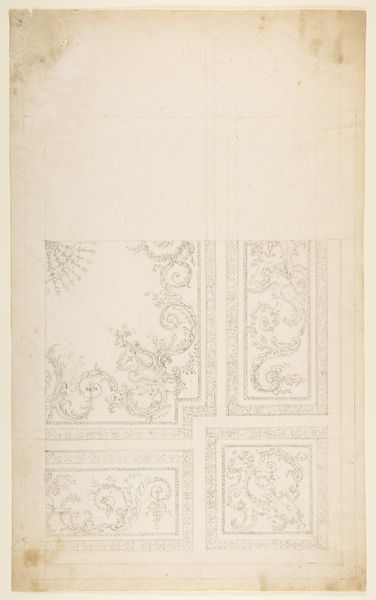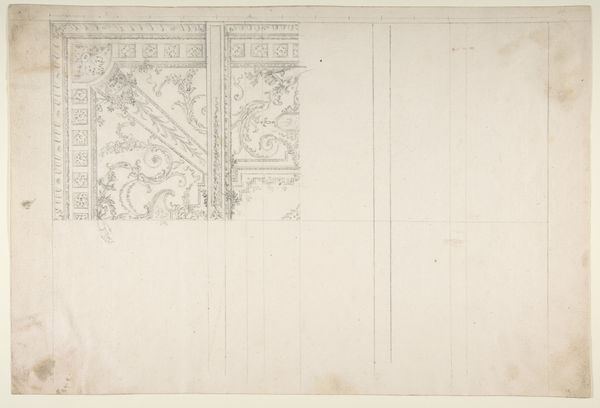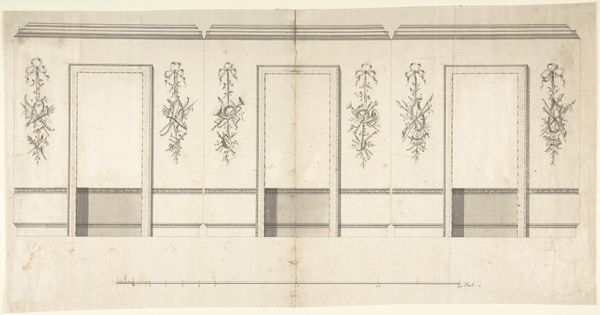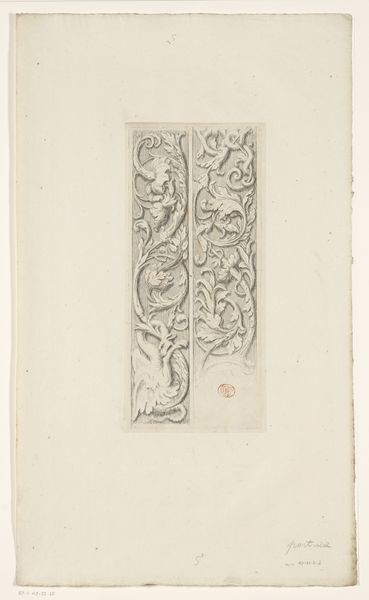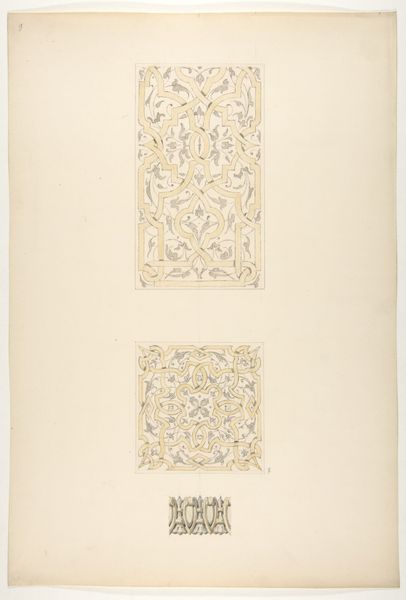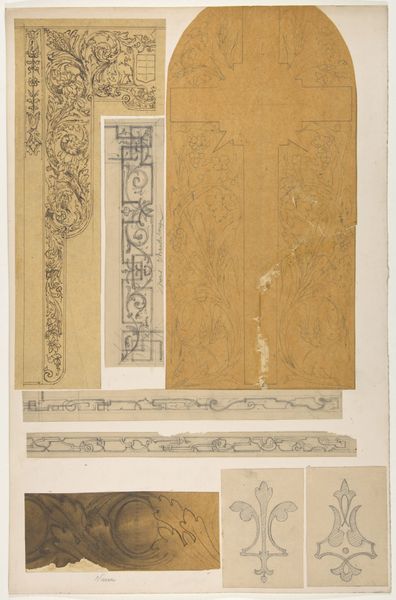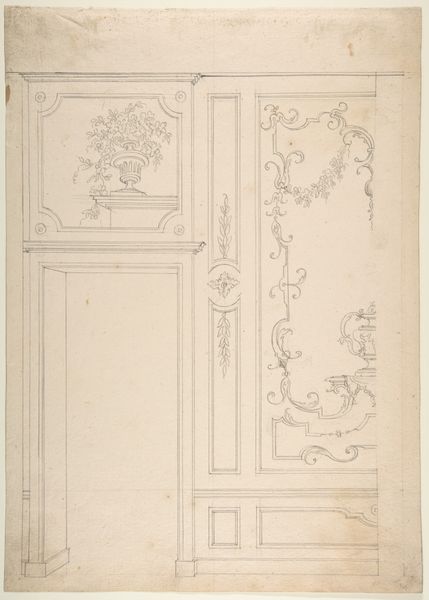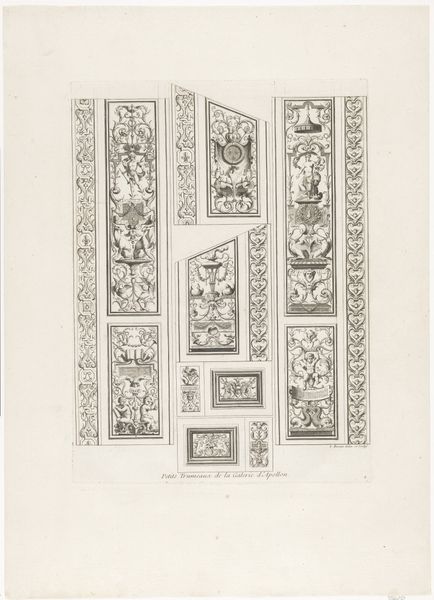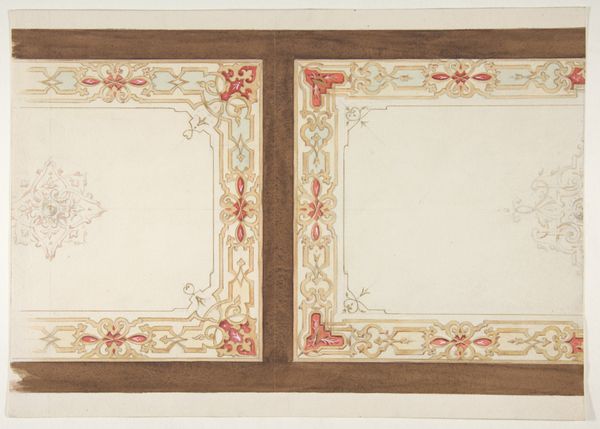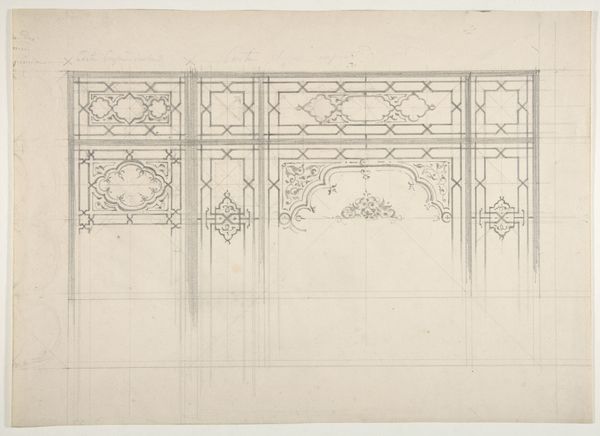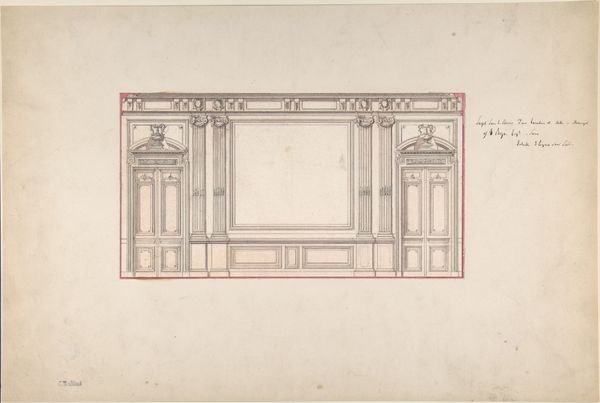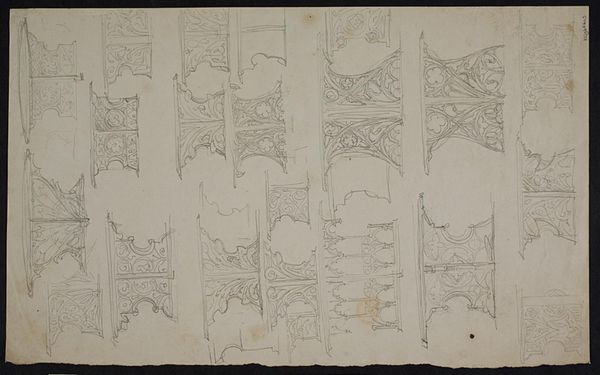
Designs for the painted decoration of framed panels, possibly for the Château de Mouchy (Oise) 1850 - 1900
0:00
0:00
Dimensions: Overall: 11 x 8 11/16 in. (28 x 22.1 cm)
Copyright: Public Domain
Curator: Here we have “Designs for the painted decoration of framed panels, possibly for the Château de Mouchy (Oise).” These etchings, drawings, and prints were created sometime between 1850 and 1900 by Jules-Edmond-Charles Lachaise. Editor: They give off a sense of aristocratic ennui, all muted colors and careful lines. The intricate patterns seem like they belong to another time, something precious yet fragile. Curator: The question of belonging is key here. These designs, intended for a space like the Château de Mouchy, speak to a particular aspiration for refined luxury, accessible only to those who held considerable social and economic power. The romanticism that imbues them feels politically charged, gesturing toward exclusivity and entrenched hierarchies. Editor: Absolutely. I see the recurring motifs—the urns, floral garlands, and those curious monograms atop the panels—as potent symbols of dynastic wealth. It’s a language of heraldry and inherited privilege translated into decorative elements. Each element resonates with specific meaning: vases speak to celebration, and flower to purity or refinement. Curator: And yet, viewing them now, that intended aura of power feels muted, even questioned. What does it mean to engage with these emblems of past authority? Are we admiring a bygone aesthetic, or grappling with the legacy of inequality it represents? It's a complex dance between aesthetic appreciation and critical analysis. Editor: Perhaps it's the etching itself, the graphic reproduction, that introduces this subtle distance. It democratizes what would otherwise remain a unique, exclusive adornment. By circulating it in a new space, these decorations get to symbolize aspiration towards social change rather than a status quo. Curator: An excellent point! The act of reproduction changes its semiotic context. Instead of fixed meanings, we see possibilities for reinvention and dissent. It really does invite one to confront not only the art, but our place in its ongoing narrative. Editor: It gives such food for thought! Every image speaks of more than beauty, and encourages reevaluation of inherited signs and symbols. Curator: Indeed, a great note to end our reflections! Thanks for this stimulating dialog.
Comments
No comments
Be the first to comment and join the conversation on the ultimate creative platform.
